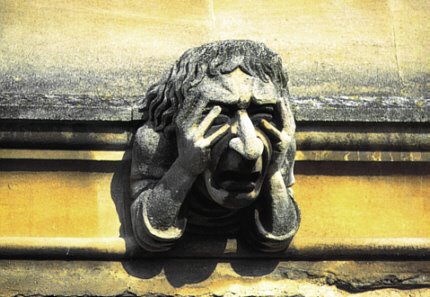Private Parts: Early Modern Bodies, Spaces and Texts
 The Early Modern Interdisciplinary Group of the City University of New York Graduate Center invites abstract submissions for its annual conference
The Early Modern Interdisciplinary Group of the City University of New York Graduate Center invites abstract submissions for its annual conferenceFriday, April 3, 2009
In 1860, Jacob Burckhardt asserted that the English Renaissance witnessed the emergence of the individual. This new “private man” operated in two distinctly different spheres—maintaining a public face while experiencing a sense of privacy not compatible with medieval sanctions. Though Burckhardt’s arguments have met opposition and criticism, the dialectic of public and private realms has remained a force in early modern scholarship, with recent work addressing issues of privacy from material culture, feminist, queer and textual perspectives. This conference aims to interrogate this dialectic as it manifests in early modern literature, art, architecture, culture, music, science and philosophy. How do our notions of privacy impact our study of Renaissance life? Did privacy mean the same thing for men as for women? How did the emergence of private rooms shape notions of personal privacy or intimacy? In what ways did the rise of private reading change the dissemination and reception of texts?
Topics for papers or panels might include, but are not limited to:
∑ private chambers
∑ diaries and letters
∑ domesticity
∑ apocrypha, palimpsests and deleted scenes
∑ the study, the studiolo and the reading room
∑ body image, body parts
∑ private art and book collections
∑ silent reading
∑ the hidden and unseen
∑ the forbidden and taboo
∑ medical studies of the body
∑ self-fashioning vs. the private self
∑ covert organizations
∑ the private person
∑ hermetic life
∑ private or underground worship
∑ spying and violating privacy
∑ quarantines, hospitals, and asylums
∑ private chapels and prayer spaces
∑ privilege and privacy
∑ life-writing
∑ manuscript circulation
∑ backstage/off-stage action
∑ clandestine relationships
∑ clothing the body
Please send abstracts of 250 words to EMIGconference@gmail.com by January 15, 2009.


0 Comments:
Post a Comment
<< Home